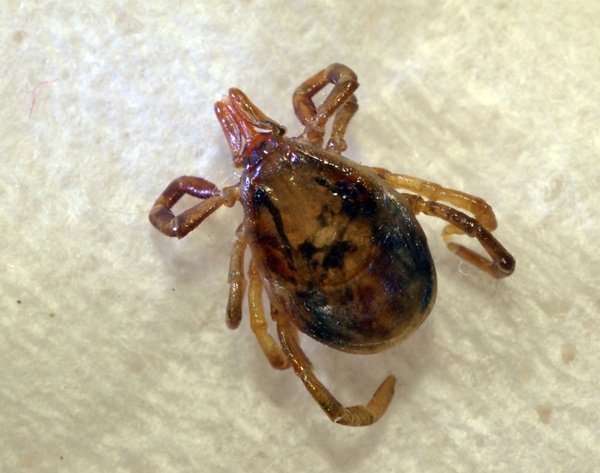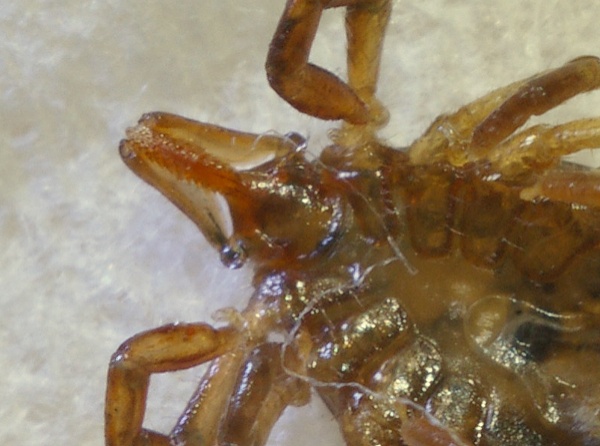|

Dead Scrub Tick removed from skin after rainforest walk.
Photograph copyright: ozwildlife - all rights reserved. Used with permission.
|

Underside of tick showing piercing mouthparts with backward pointing barbs
Some rights reserved.
|
|
|
SCRUB TICK FACTS |
Description
Ticks are Arachnids, but not true spiders. In Australia there are about 70 species of ticks. The Scrub Tick or Paralysis Tick (Ixodes holocyclus) is a native species. It has a hard body (dorsal plate) and piercing mouthparts with backward pointing barbs. Ticks are usually pale brown in colour, but adult females may appear grey-blue in colour after feeding. Paralysing toxin is produced by adult female Scrub Tick.
Other Names
Paralysis Tick
Size
body length 3mm - 5mm. Up to 10mm-15mm when fully engorged.
Habitat
found in areas of bushland with high humidity including rainforest, open forest, woodland
Food
parasites of animals and people
Breeding
The life cycle has four stages of development - egg, larva, nymph and adult. Most species of hard ticks feed on different hosts during the larva, nymph and adult stages. Larvae and nymphs feed on their host for several days and drop to the ground where they moult into the next stage. Adult females feed for several days before laying thousands of eggs on the ground. The females die after egg laying.
Range
Scrub Ticks are found from Queensland to Victoria in humid bushland along the coastal strip to about 70 km inland.
Notes
Tick paralysis in humans is a rare but can be fatal with young children most at risk. Tick paralysis is caused by neurotoxins in the saliva of adult females. Symptoms start several days after attachment of the tick and include unsteady gait, weakness of limbs, and lethargy. Paralysis progresses over hours. In severe cases the use of an antitoxin may be necessary. There are different opinions on the best way to remove ticks. One approach is killing it before removal with an insect or tick repellent containing pyrethrins or synthetic pyrethroids. Use fine pointed tweezers to grasp the tick by the head as close to the skin as possible and gently pull the tick out. Avoid squeezing the body of the tick.
Classification
| Class: | Arachnida | | Order: | Ixodida | | Family: | Ixodidae | | Genus: | Ixodes | | Species: | holocyclus, | | Common Name: | Scrub Tick |
|
|

